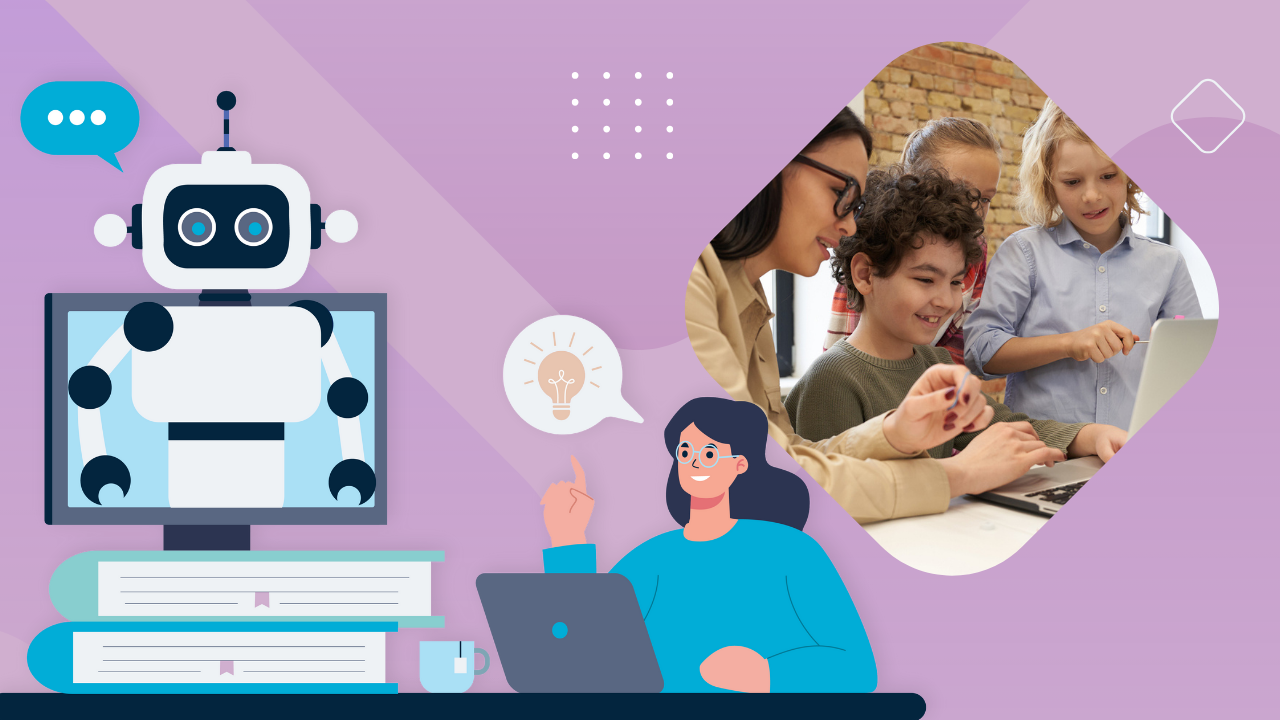If I've learned one thing about the evolving relationship between teachers and artificial intelligence (AI), it's that there's a growing curiosity among educators about how AI can revolutionize the way we teach. As I've navigated this intersection of technology and education, I've been exploring how AI might transform the classroom experience.
In my role as a teaching and learning consultant at Trafera, I've encountered endless questions and possibilities. Educators frequently ask:
"How can we creatively use AI in our classrooms? In what ways can AI assist us in teaching more effectively?"
With these questions in mind, I'm excited to share five of my favorite—and perhaps unexpected—ways to weave AI into your educational practices.


1. Customizing Learning Journeys
This first tip might just be my favorite. It’s all about using AI to modify and extend assignments, which is incredibly helpful for differentiation. In any classroom, we encounter students with varying ability levels, and AI can become a key tool in adapting our lessons to meet these diverse needs.
For example, by utilizing Chat GPT, I could create an assignment that aligns with third-grade standards on three-digit subtraction. This would be appropriate for a large portion of the class, aligning with the learning pace expected at this grade level. But what about those who need more support or those ready for additional challenges?
In such cases, I can further leverage the AI tool to adapt the assignment to each student's needs. For those who need a bit more help, I could adjust the assignment by asking the AI to add hints. The AI would then include helpful prompts, showing students where to begin or giving tips to spark their thinking, which helps build their confidence. And for students who have already grasped the basic concept and are ready for more, the AI can be used to enrich the assignment. By instructing the AI to include higher-level thinking questions, it introduces complexities that challenge these students further, encouraging deeper engagement and skill development.
2. Engaging Openers and Closers
Just as personalizing assignments can transform learning, so can refreshing how we kick off and close out class. Using AI for bell ringers and exit slips brings a dynamic element to both formative assessments and classroom activities. With AI tools like Chat GPT or Google Gemini, it's easy to input various educational standards, text passages, or specific subjects we're exploring and quickly generate engaging prompts.
Lets take for instance, creating exit slip questions for the initial chapters of Holes by Louis Sachar, focusing on character traits. This precision lets us drill down into specific learning goals or keep things broad, depending on what we aim to achieve. Personally, I find these AI-generated prompts particularly useful for weaving in more social-emotional learning (SEL) into class time. AI provides an accessible way to create questions that not only assess academic understanding but also foster emotional intelligence and reflection among students.
For example, generating bell ringer questions for fifth graders that align with CASEL standards can seamlessly integrate SEL into the daily routine, enriching the classroom experience for students on multiple levels.
Copy/Paste this prompt to try it for yourself:
Using CASEL Standards, create 5 bell ringer questions for my lesson on [insert your topic here]


3. Stimulating STEM Innovation
Another area close to my heart is integrating STEM or project-based learning into any subject. This approach has always been a particular favorite of mine. Having spent several years as a STEM specialist, I've seen the enthusiasm it sparks among both students and teachers firsthand. The challenge, however, lies in the time and expertise required to develop these high-quality STEM activities—of which, time is often in short supply.
This is where AI can make a significant difference. Imagine simply inputting the current topic of study into a generative AI tool, along with any relevant standards or even the materials you have on hand. The AI can then generate a list of STEM and project-based learning ideas tailored to that subject.
????PRO TIP: Ask for a list. Then, the AI tool can generate a handful of options that I can comb through and see what catches my eye. Not all responses are golden, so having a list makes it easier to weed out the bad and work off the good.
Let's say I wanted to infuse my curriculum with STEM or project-based learning activities for sixth graders studying ancient civilizations. I could ask an AI tool for a list of ten activities, and it would deliver a variety of creative and engaging ideas. This not only helps me save significant time on preparation but also enhances the teaching experience, making the learning process more dynamic and captivating for students.
Copy/Paste this prompt to try it for yourself:
Give me 5 ideas for project-based learning activities for my [GRADE LEVEL] class studying [TOPIC]. Align with [STANDARDS]


4. Injecting Humor and Engagement
Believe it or not, AI can be quite the comedian. This approach might sound unconventional, but integrating jokes or riddles about lesson content is a fun way to spark engagement. I’ll admit, it's funny to see how different age groups react—while younger students often find these hilarious, older ones might just roll their eyes or groan. Regardless, kicking off a lesson with a humorous note is a simple yet effective method to unite the class.
I once used Chat GPT to come up with a joke on chromosomal inheritance for my high schoolers. It offered: "Why was the gene feeling confident?" The punchline? "Because it knew it had good inheritance." Sure, it's a bit corny, and it of course got some eye rolls, but it also sparked laughter and served as a great icebreaker.


5. Enhancing Student Choice
Last but certainly not least, let's talk about choice board ideas. I'm a strong advocate for promoting student agency, providing learners the opportunity to have a say in their educational journey. That’s why choice boards have been a staple in my teaching toolkit.
But it's no secret that maintaining fresh and appealing choice boards can be a challenge as reusing the same ideas can lead to a lack of enthusiasm among students, who quickly recognize the repetition and might lose interest.
This is where AI can offer a breath of fresh air.
By simply inputting a specific grade level topic or focusing on particular standards into an AI tool, I can generate a variety of new ideas for my choice boards. In the past, I have asked for ten ideas for a fourth-grade math choice board focusing on geometry. I was amazed by the variety and creativity of the suggestions, not only did it save me preparation time but it also injected new energy into my choice boards, keeping them exciting and relevant for my students.


I will note that some ideas generated by AI were a perfect fit for my class right away, while others required a bit of tweaking to suit my students' needs better. But that's the beauty of it—the flexibility to explore and adapt ideas means the possibilities for enhancing student choice are virtually limitless.
There you have it—those are five of my favorite and creatively enriching ways to integrate AI into the classroom. These strategies showcase just a fraction of AI's potential to revolutionize our teaching practices, making learning more personalized, engaging, and enjoyable for our students.
If you're curious to dive deeper or have any questions about implementing AI in your teaching, we're here to help. Find more resources here on our website or contact us directly. We're always excited to support educators on their journey to harnessing technology for better learning outcomes.




